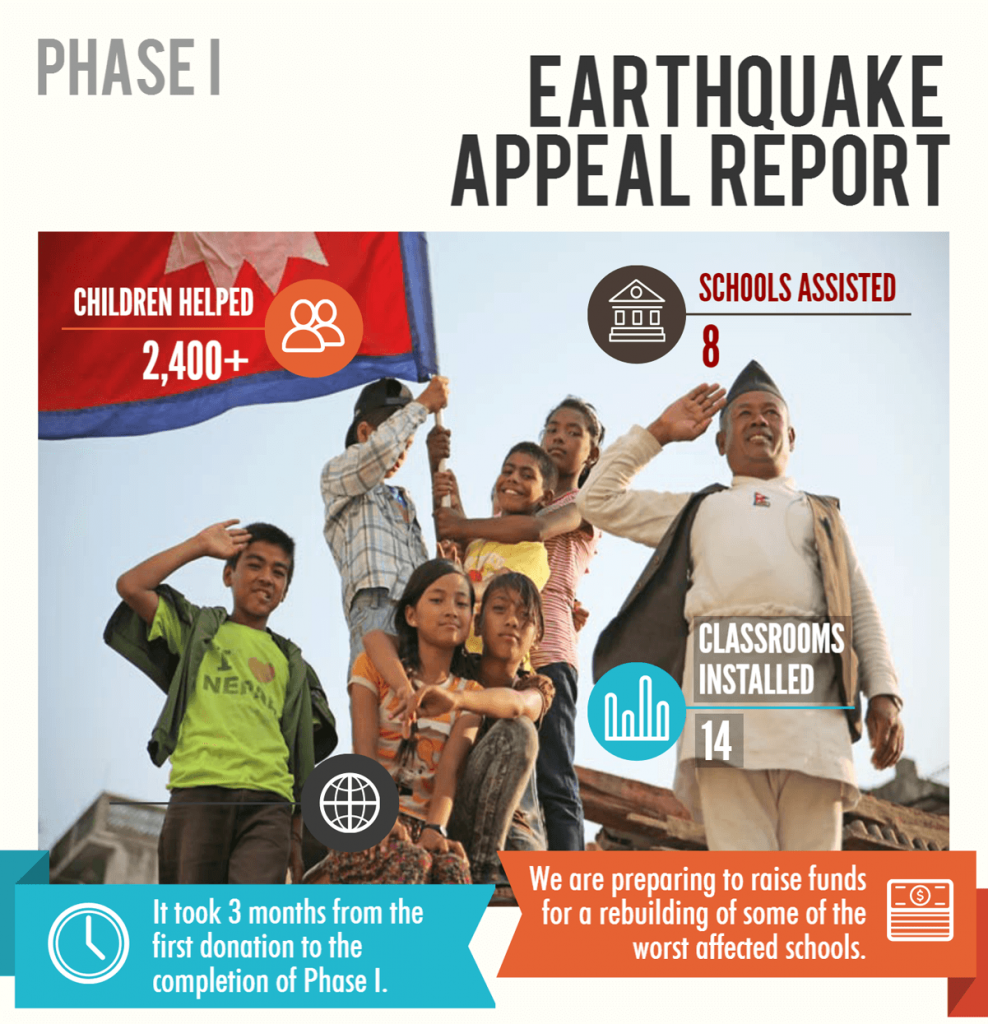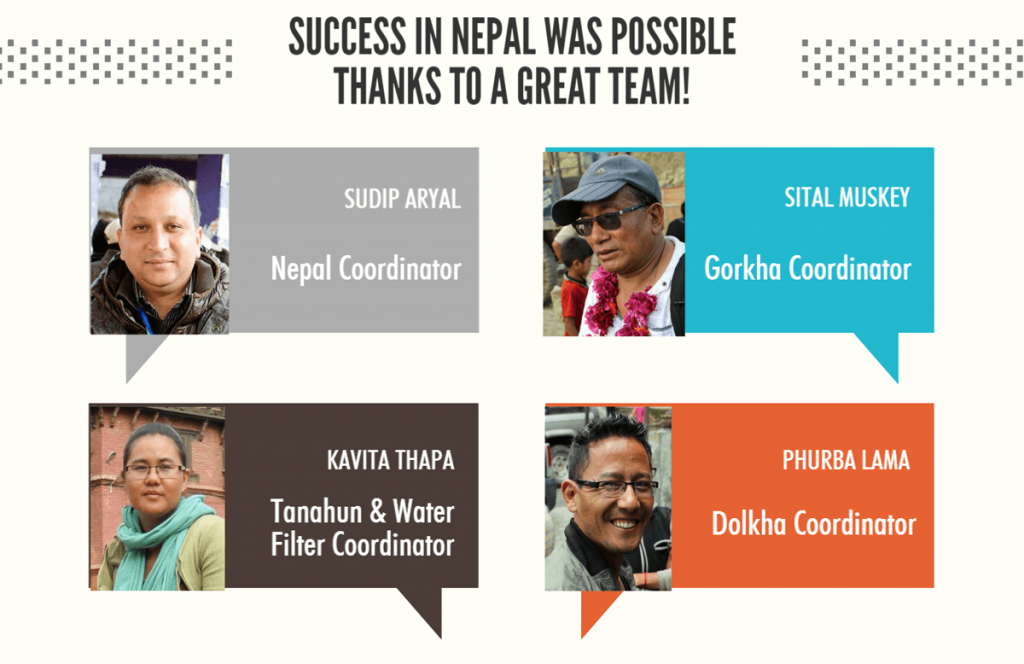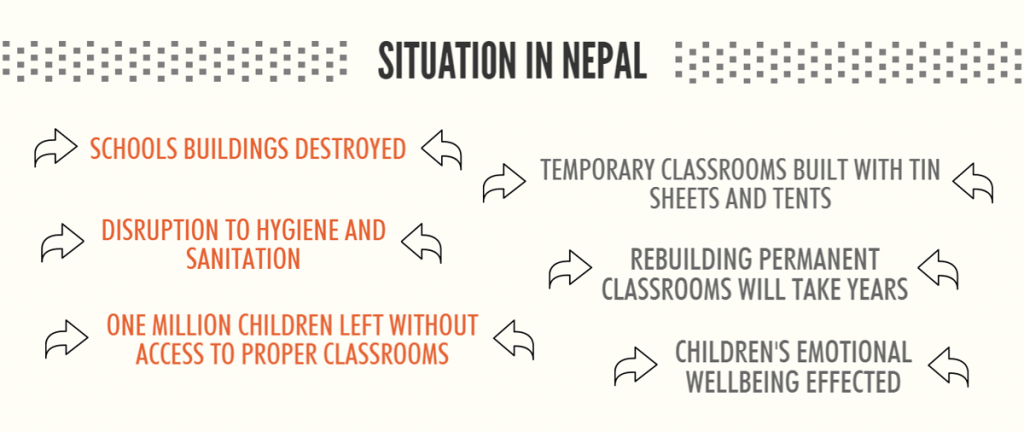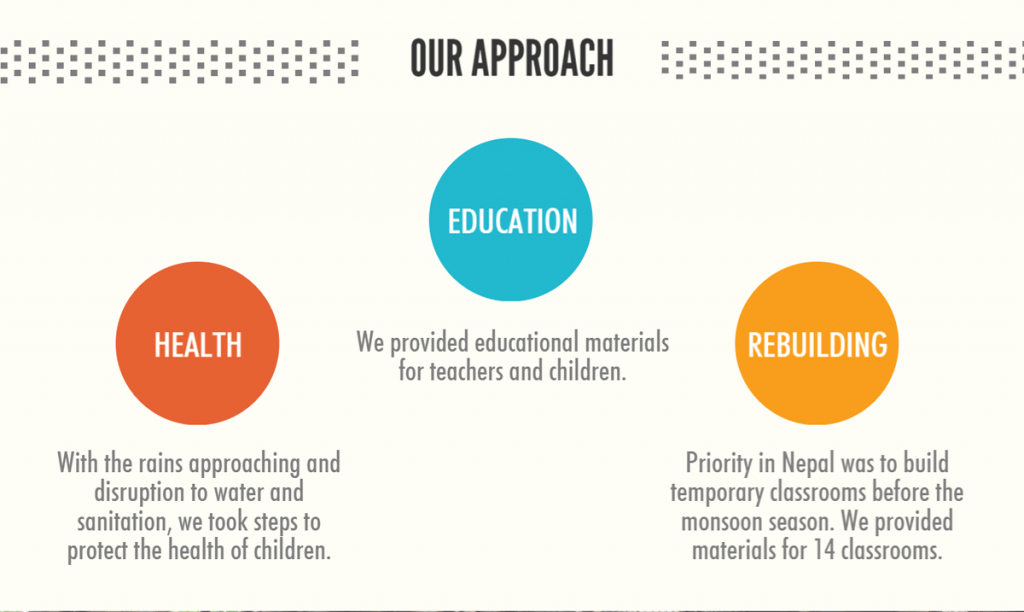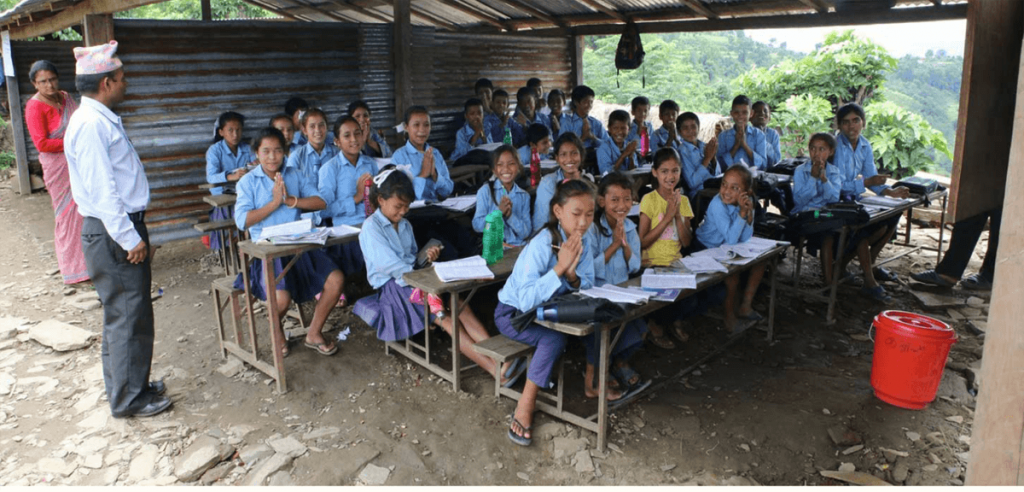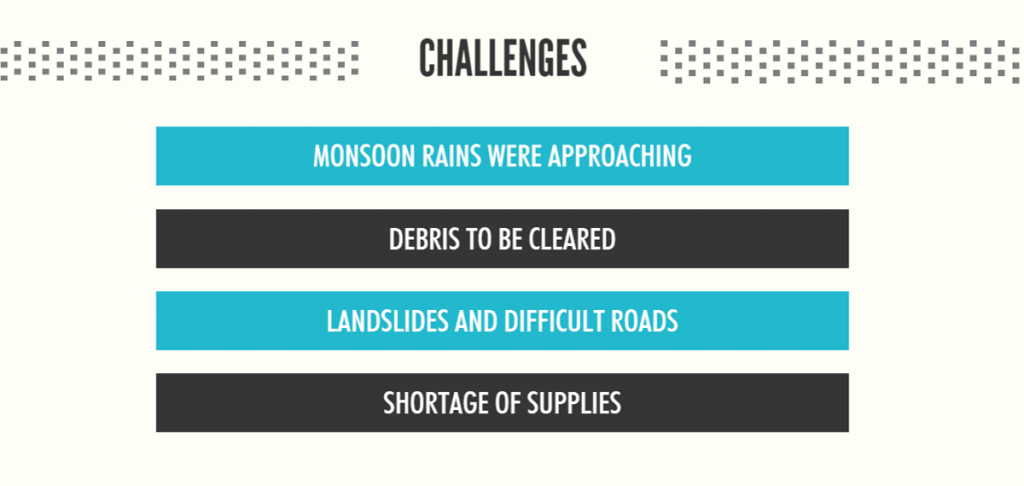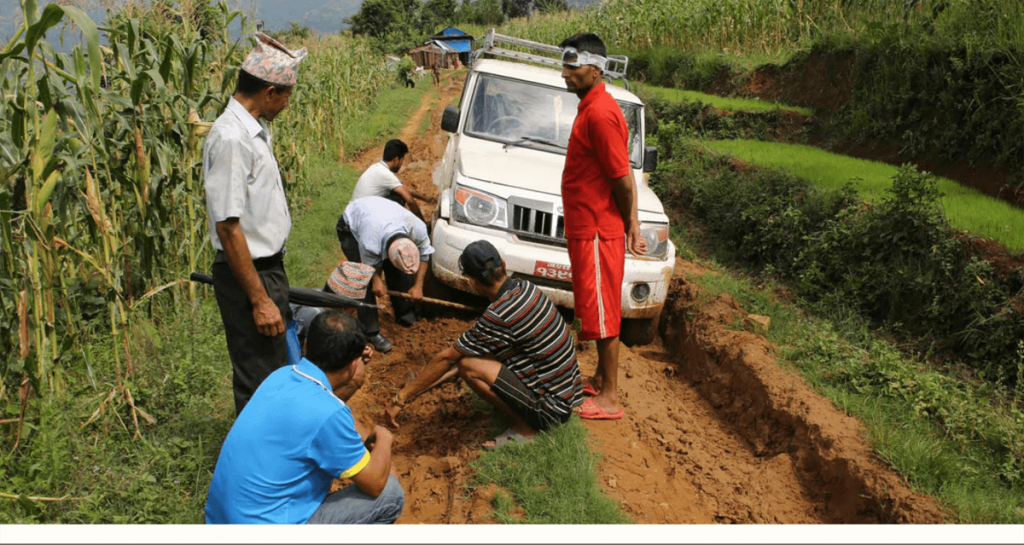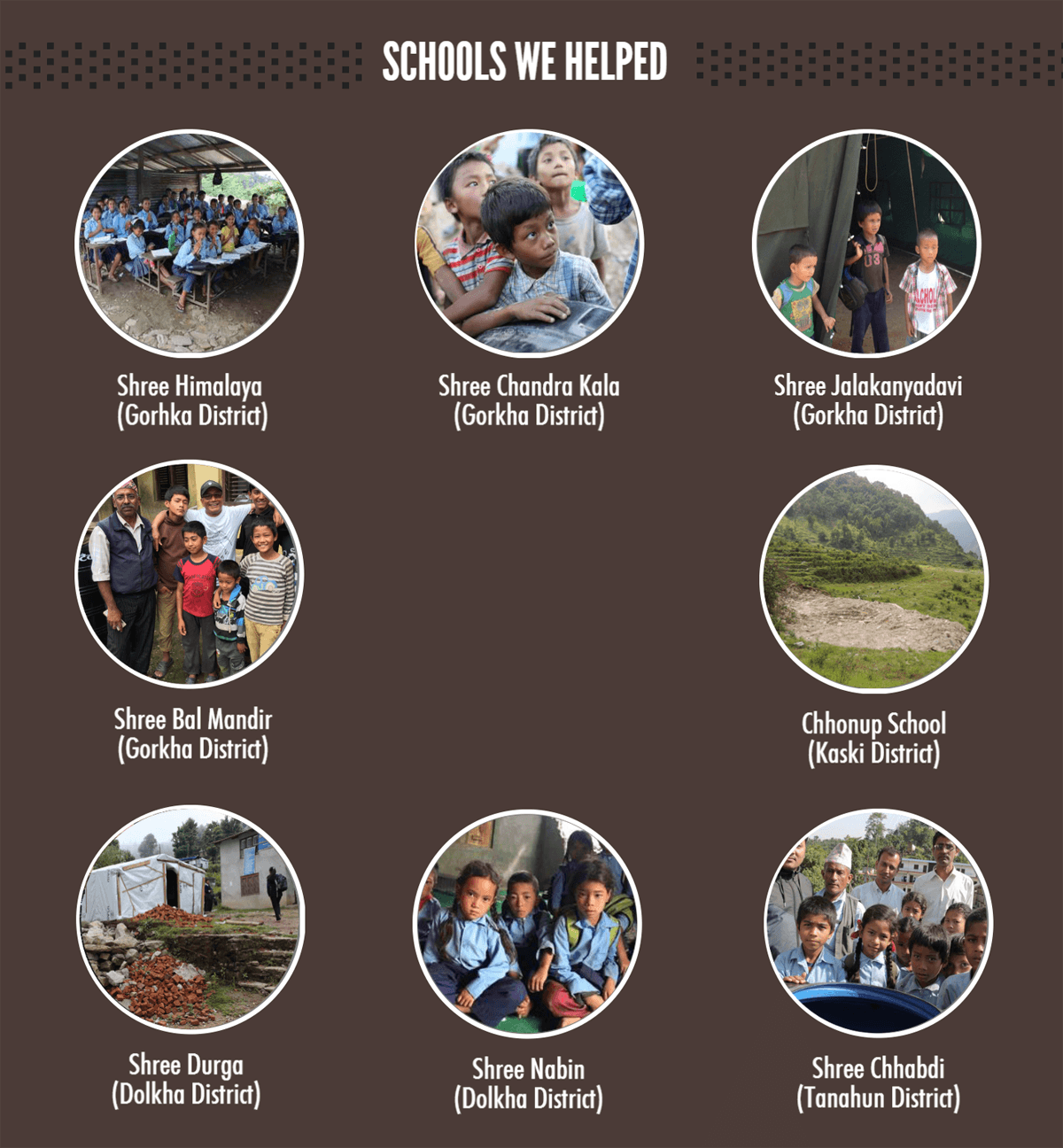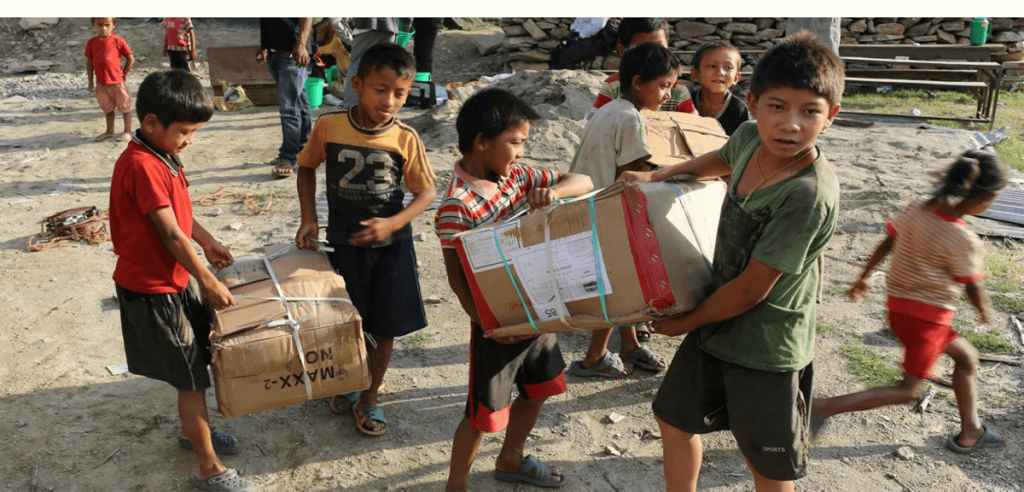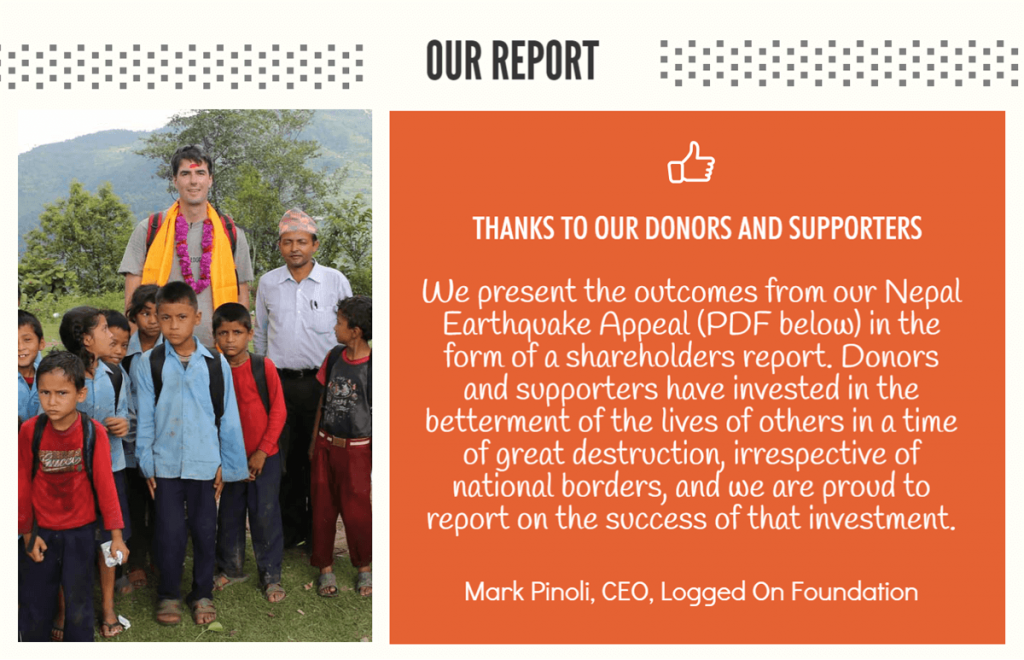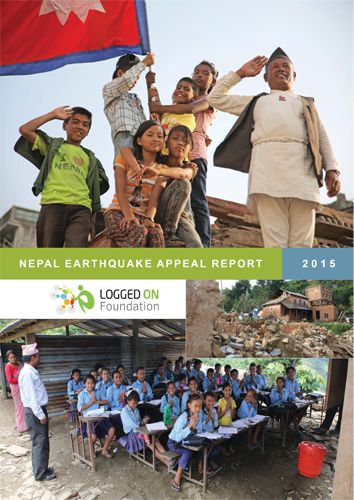On the 25 April 2015, a 7.8 magnitude earthquake struck Nepal seriously affecting around a third of the national population. Nearly 9,000 people were killed, 22,000 injured, and entire villages flattened across many districts leaving around 1.5 million people homeless.
The epicentre of the earthquake was in the Gorkha District with hundreds of tremors occurring across the country’s central-Eastern region for many months. The largest was a 7.3 magnitude aftershock occurring on 12 May in the Dolakha District, near the Tibet border between the capital of Kathmandu and Mt. Everest.
Government records show that over 30,000 classrooms from around 8,000 public schools in 32 districts were condemned with 90% of schools destroyed in the worst affected districts. Almost one million children could not attend school in the immediate aftermath and aid agencies expressed serious concerns for the future of millions of traumatised children and their vulnerability to disease, abuse and child trafficking.
The reality for many children in communities affected by the earthquake is that they have fallen into a three year educational hole that will be difficult to recover from. Imagine trying to learn in a tin-clad makeshift classroom when it’s raining and you can’t hear the teacher and the classroom floor is flooded with water, or it’s so hot that you have to go out to cool-off, or so cold that holding a pencil can is difficult.
Within a few days of the disaster, we put out a call to our supporters, pushed ahead with fundraising events, and started planning an on-the-ground aid strategy with our Nepal team. In May, our Nepal teams and I came together in Nepal to begin a program aimed at helping to repair and revive schools affected by the disaster.
We entered both Dolakha and Gorkha districts to provide aid to six schools and helped one school in the district of Tanahun. The quakes’ strongest impact was in the remote rural areas and this is where we decided to focus our efforts, although it made the response extremely challenging, more expensive and dangerous.
We discussed what the most pressing needs of the schools were with government officials, the local UNDP representative, school Principals and community leaders. Having considered carefully their needs and how we could best source local resources that were within our budget, our aid program focused on three core areas: assistance in constructing temporary classrooms; ensuring the health of children; and providing educational material for children and schools.
The earthquake occurred on a Saturday at a time when most people, at least in the rural areas, were outdoors. It was also the only day of the week children do not attend school. When I arrived at the schools in the Gorkha District and saw the level of destruction, I couldn’t help but think about how many tens of thousands of children would have been killed if it happened any other day.
We concluded our aid program in early July 2015. Our team and I were proud of what we were able to achieve with a modest amount of funding and in a very short time frame. We were also able to deliver projects in three districts for the first time.
Donors have entrusted their gift to us for the betterment of the lives of others in a time of great destruction, irrespective of national borders, and we are proud to report on the success of that investment.
Mark Pinoli
CEO, Logged On Foundation
Project locations:
Tanahun, Dolakha & Gorkha Districts (visit our project database page and select the Disaster Aid filter).
Health: 3 x 500L tank with water purifiers.
Construction: Materials for 14 temporary classrooms.
Supplies: Education supplies for schools & students.
Donations: Cash help provided to one orphanage.
Dates: June – July 2015 + school reconstruction completed in September 2019


